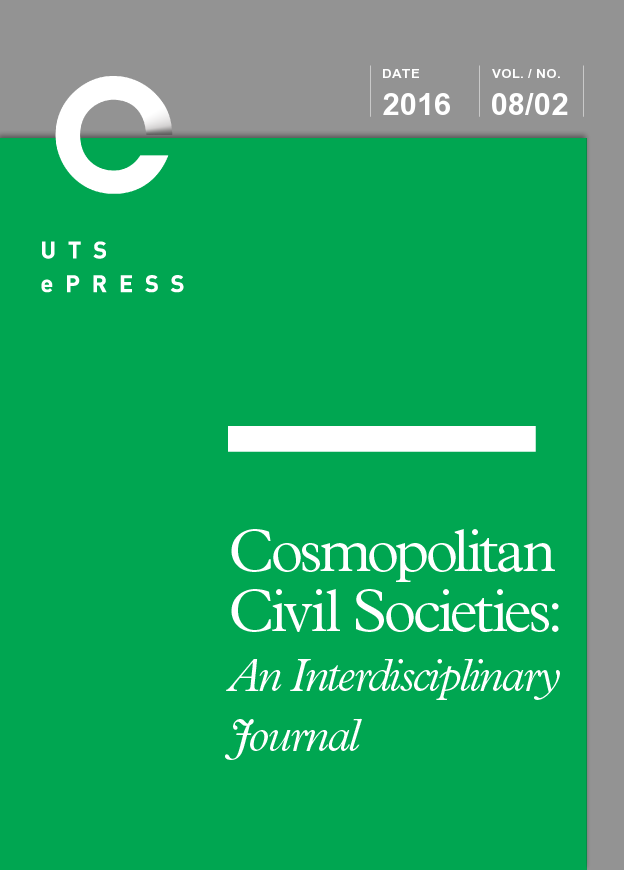The May 2015 boat crisis: the Rohingya in Aceh
Main Article Content
Abstract
The 2015 discovery of mass graves in Thailand’s Sadao district, on the border with Malaysia, led to a crack-down on people smugglers by the Thai and Malaysian authorities. Thousands of Rohingya (as well as Bangladeshi migrants) were left stranded in the Andaman Sea as smugglers abandoned their human cargo. Initially pushed back by the Thai, Malaysian and Indonesian navies, it was only after Indonesian fishermen rescued three boats that approximately 1,800 people were permitted to disembark in Indonesia’s Aceh province. The crisis in the Andaman Sea brought into sharp relief the fact that the South East Asia region lacks even the most basic regional protection (or cooperation) framework. While some states are still reticent, there have been attempts to improve government collaboration as demonstrated recently in the March 2016 Bali Declaration on People Smuggling, Trafficking in Persons, and Related Transnational Crime. This paper examines, however, how the ad hoc approach by Indonesia’s regions, in particular Aceh, to the treatment of the Rohingya who arrived in Aceh in May 2015, works against a comprehensive, national, rights-based approach to protect those seeking asylum in Indonesia. The paper explores the reasons why Aceh chose not to engage with the established practices for the treatment of asylum seekers in Indonesia and the human rights impacts this has had on those rescued. It concludes that the current situation in Aceh is not sustainable. The treatment of refugees in Aceh should be included in a broader national approach, commensurate with the treatment of refugees and asylum seekers throughout Indonesia, particularly if Indonesia is to develop a structured, rights-based approach to those seeking protection. This would then play a significant role in any future regional protection framework.
Article Details
Issue
Section
Authors who submit articles to this journal from 31st March 2014 for publication, agree to the following terms:
a) Authors retain copyright and grant the journal right of first publication with the work simultaneously licensed under a Creative Commons Attribution License that allows others to share and adapt the work with an acknowledgement of the work's authorship and initial publication in this journal.
b) Authors are able to enter into separate, additional contractual arrangements for the non-exclusive distribution of the journal's published version of the work (e.g., post it to an institutional repository or publish it in a book), with an acknowledgement of its initial publication in this journal.
c) Authors are permitted and encouraged to post their work online (e.g., in institutional repositories or on their website) prior to and during the submission process, as it can lead to productive exchanges, as well as earlier and greater citation of published work (See The Open Access Citation Advantage Service). Where authors include such a work in an institutional repository or on their website (ie. a copy of a work which has been published in a UTS ePRESS journal, or a pre-print or post-print version of that work), we request that they include a statement that acknowledges the UTS ePRESS publication including the name of the journal, the volume number and a web-link to the journal item.
d) Authors should be aware that the Creative Commons Attribution (CC-BY) License permits readers to share (copy and redistribute the work in any medium or format) and adapt (remix, transform, and build upon the work) for any purpose, even commercially, provided they also give appropriate credit to the work, provide a link to the license, and indicate if changes were made. They may do these things in any reasonable manner, but not in any way that suggests you or your publisher endorses their use.
For Volume 5 No 3 (2013) and before, the following copyright applied:
Authors submitting articles to UTSePress publications agree to assign a limited license to UTSePress if and when the manuscript is accepted for publication. This license allows UTSePress to publish a manuscript in a given issue. Articles published by UTSePress are protected by copyright which is retained by the authors who assert their moral rights. Authors control translation and reproduction rights to their works published by UTSePress. UTSePress publications are copyright and all rights are reserved worldwide. Downloads of specific portions of them are permitted for personal use only, not for commercial use or resale. Permissions to reprint or use any materials should be directed to UTSePress.
